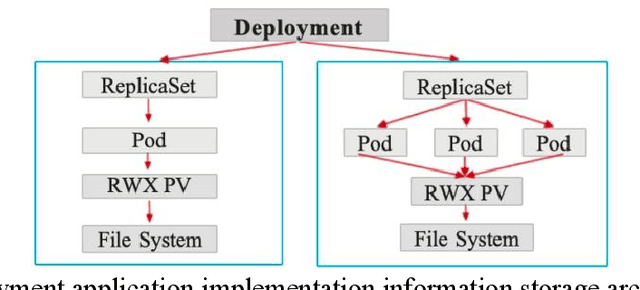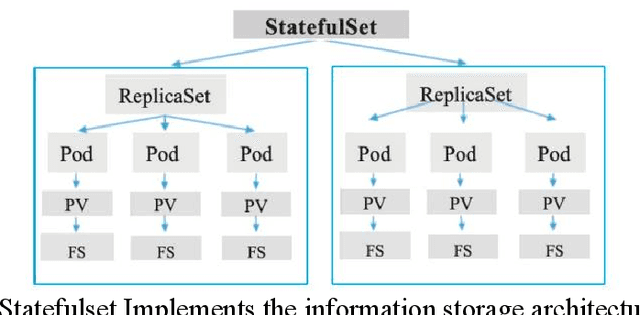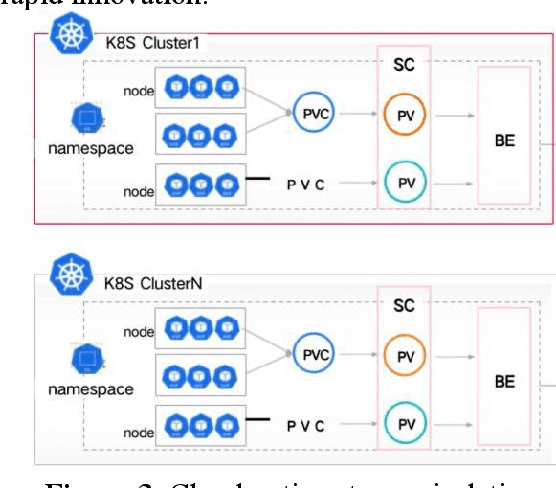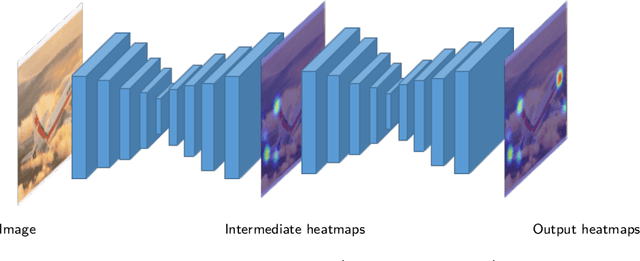Yufu Wang
PromptHMR: Promptable Human Mesh Recovery
Apr 08, 2025Abstract:Human pose and shape (HPS) estimation presents challenges in diverse scenarios such as crowded scenes, person-person interactions, and single-view reconstruction. Existing approaches lack mechanisms to incorporate auxiliary "side information" that could enhance reconstruction accuracy in such challenging scenarios. Furthermore, the most accurate methods rely on cropped person detections and cannot exploit scene context while methods that process the whole image often fail to detect people and are less accurate than methods that use crops. While recent language-based methods explore HPS reasoning through large language or vision-language models, their metric accuracy is well below the state of the art. In contrast, we present PromptHMR, a transformer-based promptable method that reformulates HPS estimation through spatial and semantic prompts. Our method processes full images to maintain scene context and accepts multiple input modalities: spatial prompts like bounding boxes and masks, and semantic prompts like language descriptions or interaction labels. PromptHMR demonstrates robust performance across challenging scenarios: estimating people from bounding boxes as small as faces in crowded scenes, improving body shape estimation through language descriptions, modeling person-person interactions, and producing temporally coherent motions in videos. Experiments on benchmarks show that PromptHMR achieves state-of-the-art performance while offering flexible prompt-based control over the HPS estimation process.
Continuous-Time Human Motion Field from Events
Dec 02, 2024Abstract:This paper addresses the challenges of estimating a continuous-time human motion field from a stream of events. Existing Human Mesh Recovery (HMR) methods rely predominantly on frame-based approaches, which are prone to aliasing and inaccuracies due to limited temporal resolution and motion blur. In this work, we predict a continuous-time human motion field directly from events by leveraging a recurrent feed-forward neural network to predict human motion in the latent space of possible human motions. Prior state-of-the-art event-based methods rely on computationally intensive optimization across a fixed number of poses at high frame rates, which becomes prohibitively expensive as we increase the temporal resolution. In comparison, we present the first work that replaces traditional discrete-time predictions with a continuous human motion field represented as a time-implicit function, enabling parallel pose queries at arbitrary temporal resolutions. Despite the promises of event cameras, few benchmarks have tested the limit of high-speed human motion estimation. We introduce Beam-splitter Event Agile Human Motion Dataset-a hardware-synchronized high-speed human dataset to fill this gap. On this new data, our method improves joint errors by 23.8% compared to previous event human methods while reducing the computational time by 69%.
PharmaGPT: Domain-Specific Large Language Models for Bio-Pharmaceutical and Chemistry
Jul 03, 2024



Abstract:Large language models (LLMs) have revolutionized Natural Language Processing (NLP) by by minimizing the need for complex feature engineering. However, the application of LLMs in specialized domains like biopharmaceuticals and chemistry remains largely unexplored. These fields are characterized by intricate terminologies, specialized knowledge, and a high demand for precision areas where general purpose LLMs often fall short. In this study, we introduce PharmGPT, a suite of multilingual LLMs with 13 billion and 70 billion parameters, specifically trained on a comprehensive corpus of hundreds of billions of tokens tailored to the Bio-Pharmaceutical and Chemical sectors. Our evaluation shows that PharmGPT matches or surpasses existing general models on key benchmarks, such as NAPLEX, demonstrating its exceptional capability in domain-specific tasks. This advancement establishes a new benchmark for LLMs in the Bio-Pharmaceutical and Chemical fields, addressing the existing gap in specialized language modeling. Furthermore, this suggests a promising path for enhanced research and development in these specialized areas, paving the way for more precise and effective applications of NLP in specialized domains.
PharmGPT: Domain-Specific Large Language Models for Bio-Pharmaceutical and Chemistry
Jun 26, 2024



Abstract:Large language models (LLMs) have revolutionized Natural Language Processing (NLP) by by minimizing the need for complex feature engineering. However, the application of LLMs in specialized domains like biopharmaceuticals and chemistry remains largely unexplored. These fields are characterized by intricate terminologies, specialized knowledge, and a high demand for precision areas where general purpose LLMs often fall short. In this study, we introduce PharmGPT, a suite of multilingual LLMs with 13 billion and 70 billion parameters, specifically trained on a comprehensive corpus of hundreds of billions of tokens tailored to the Bio-Pharmaceutical and Chemical sectors. Our evaluation shows that PharmGPT matches or surpasses existing general models on key benchmarks, such as NAPLEX, demonstrating its exceptional capability in domain-specific tasks. This advancement establishes a new benchmark for LLMs in the Bio-Pharmaceutical and Chemical fields, addressing the existing gap in specialized language modeling. Furthermore, this suggests a promising path for enhanced research and development in these specialized areas, paving the way for more precise and effective applications of NLP in specialized domains.
The intelligent prediction and assessment of financial information risk in the cloud computing model
Apr 14, 2024



Abstract:Cloud computing (cloud computing) is a kind of distributed computing, referring to the network "cloud" will be a huge data calculation and processing program into countless small programs, and then, through the system composed of multiple servers to process and analyze these small programs to get the results and return to the user. This report explores the intersection of cloud computing and financial information processing, identifying risks and challenges faced by financial institutions in adopting cloud technology. It discusses the need for intelligent solutions to enhance data processing efficiency and accuracy while addressing security and privacy concerns. Drawing on regulatory frameworks, the report proposes policy recommendations to mitigate concentration risks associated with cloud computing in the financial industry. By combining intelligent forecasting and evaluation technologies with cloud computing models, the study aims to provide effective solutions for financial data processing and management, facilitating the industry's transition towards digital transformation.
TRAM: Global Trajectory and Motion of 3D Humans from in-the-wild Videos
Mar 26, 2024



Abstract:We propose TRAM, a two-stage method to reconstruct a human's global trajectory and motion from in-the-wild videos. TRAM robustifies SLAM to recover the camera motion in the presence of dynamic humans and uses the scene background to derive the motion scale. Using the recovered camera as a metric-scale reference frame, we introduce a video transformer model (VIMO) to regress the kinematic body motion of a human. By composing the two motions, we achieve accurate recovery of 3D humans in the world space, reducing global motion errors by 60% from prior work. https://yufu-wang.github.io/tram4d/
GART: Gaussian Articulated Template Models
Nov 27, 2023Abstract:We introduce Gaussian Articulated Template Model GART, an explicit, efficient, and expressive representation for non-rigid articulated subject capturing and rendering from monocular videos. GART utilizes a mixture of moving 3D Gaussians to explicitly approximate a deformable subject's geometry and appearance. It takes advantage of a categorical template model prior (SMPL, SMAL, etc.) with learnable forward skinning while further generalizing to more complex non-rigid deformations with novel latent bones. GART can be reconstructed via differentiable rendering from monocular videos in seconds or minutes and rendered in novel poses faster than 150fps.
ReFit: Recurrent Fitting Network for 3D Human Recovery
Aug 22, 2023



Abstract:We present Recurrent Fitting (ReFit), a neural network architecture for single-image, parametric 3D human reconstruction. ReFit learns a feedback-update loop that mirrors the strategy of solving an inverse problem through optimization. At each iterative step, it reprojects keypoints from the human model to feature maps to query feedback, and uses a recurrent-based updater to adjust the model to fit the image better. Because ReFit encodes strong knowledge of the inverse problem, it is faster to train than previous regression models. At the same time, ReFit improves state-of-the-art performance on standard benchmarks. Moreover, ReFit applies to other optimization settings, such as multi-view fitting and single-view shape fitting. Project website: https://yufu-wang.github.io/refit_humans/
Multi-view Tracking, Re-ID, and Social Network Analysis of a Flock of Visually Similar Birds in an Outdoor Aviary
Dec 01, 2022Abstract:The ability to capture detailed interactions among individuals in a social group is foundational to our study of animal behavior and neuroscience. Recent advances in deep learning and computer vision are driving rapid progress in methods that can record the actions and interactions of multiple individuals simultaneously. Many social species, such as birds, however, live deeply embedded in a three-dimensional world. This world introduces additional perceptual challenges such as occlusions, orientation-dependent appearance, large variation in apparent size, and poor sensor coverage for 3D reconstruction, that are not encountered by applications studying animals that move and interact only on 2D planes. Here we introduce a system for studying the behavioral dynamics of a group of songbirds as they move throughout a 3D aviary. We study the complexities that arise when tracking a group of closely interacting animals in three dimensions and introduce a novel dataset for evaluating multi-view trackers. Finally, we analyze captured ethogram data and demonstrate that social context affects the distribution of sequential interactions between birds in the aviary.
Semantic keypoint-based pose estimation from single RGB frames
Apr 12, 2022



Abstract:This paper presents an approach to estimating the continuous 6-DoF pose of an object from a single RGB image. The approach combines semantic keypoints predicted by a convolutional network (convnet) with a deformable shape model. Unlike prior investigators, we are agnostic to whether the object is textured or textureless, as the convnet learns the optimal representation from the available training-image data. Furthermore, the approach can be applied to instance- and class-based pose recovery. Additionally, we accompany our main pipeline with a technique for semi-automatic data generation from unlabeled videos. This procedure allows us to train the learnable components of our method with minimal manual intervention in the labeling process. Empirically, we show that our approach can accurately recover the 6-DoF object pose for both instance- and class-based scenarios even against a cluttered background. We apply our approach both to several, existing, large-scale datasets - including PASCAL3D+, LineMOD-Occluded, YCB-Video, and TUD-Light - and, using our labeling pipeline, to a new dataset with novel object classes that we introduce here. Extensive empirical evaluations show that our approach is able to provide pose estimation results comparable to the state of the art.
* https://sites.google.com/view/rcta-object-keypoints-dataset/home. arXiv admin note: substantial text overlap with arXiv:1703.04670
 Add to Chrome
Add to Chrome Add to Firefox
Add to Firefox Add to Edge
Add to Edge